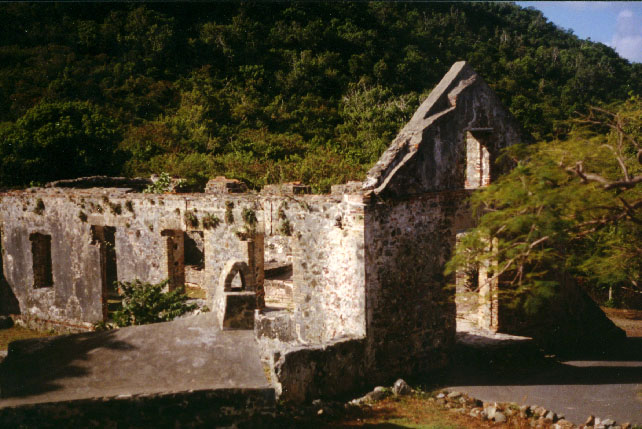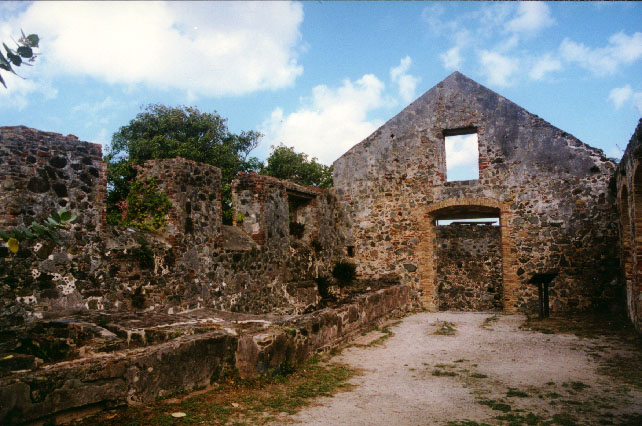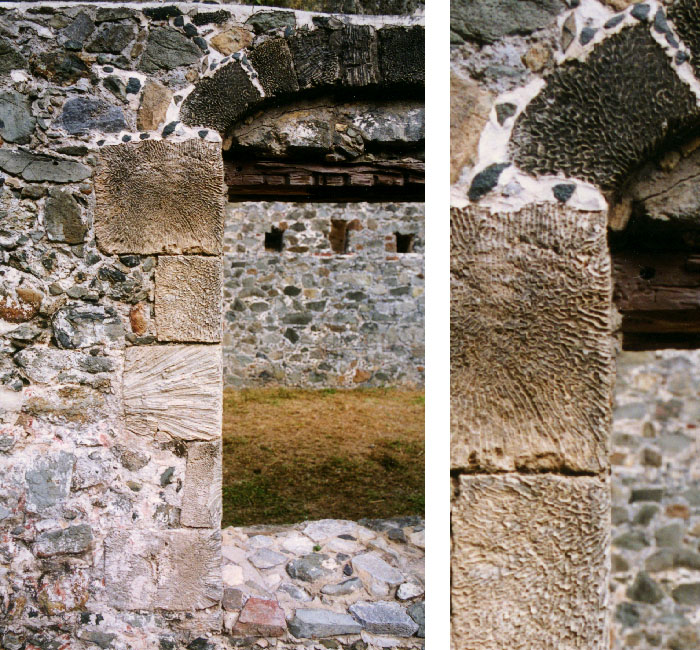

Much of the building consists of randomly sized and shaped pieces of the metamorphic rocks that make up much of the island. Those random sizes and shapes don't make straight edges and corners, so a more workable stone was needed. Builders found that stone locally in the corals that abound in the reefs and on the seafloor surrounding the island. Corals generate masses of calcium carbonate, which isn't as hard as most silicate minerals. That lesser hardness, and the porosity of the coral skeleton, make it relatively easy to cut. The window below, for example, is framed with cut coral in which the living chambers of the individual coral animals can be seen clearly, especially in the enlargement at right.
